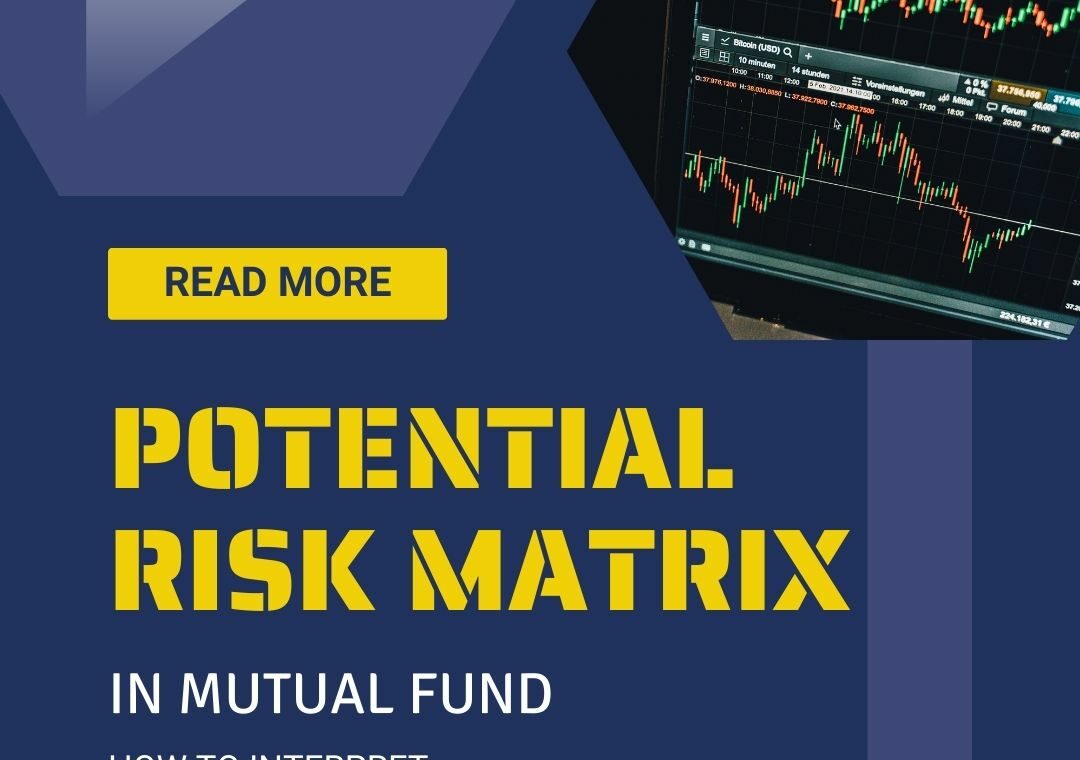Investing in debt mutual funds can be a compelling option for investors seeking steady returns without the risks associated with stock markets. Nevertheless, it is essential to understand the potential risks involved with debt mutual funds before investing. The Potential Risk Matrix in Debt Mutual Funds is a tool used by investors to analyze a debt mutual fund’s risk level and make informed decisions. In this article, we will look at how to interpret the Potential Risk Matrix in Debt Mutual Funds and why it is important for investors to understand it.

Definition of Debt Mutual Funds
Debt mutual funds are investment instruments that enable investors to access a diversified portfolio of debt securities such as corporate bonds, government bonds, treasury bills and money market instruments. These funds are ideal for investors who are looking for regular income as they invest primarily in fixed income securities, which generate regular income in the form of interest payments. The returns generated by debt mutual funds tend to be much lower than equity funds, but are generally more stable and less risky. Debt mutual funds can be further categorized into gilt funds, corporate bond funds, liquid funds and short–term debt funds, depending on the type of debt securities they invest in. These funds also offer the benefit of liquidity, as investors can exit the fund at any time and redeem their units within a few working days.
Overview of Potential Risk Matrix in Debt Mutual Funds
Debt Mutual Funds are a popular investment option for many investors due to their relatively low risk and attractive returns. However, there are certain risks associated with investing in these funds that need to be taken into consideration. A potential risk matrix can help investors identify and assess these risks so they can make informed decisions about their investments.
The potential risk matrix for debt mutual funds can be broken down into three main categories: Credit Risk, Interest Rate Risk, and Liquidity Risk. Credit Risk is the risk of the issuer of the debt instrument not being able to meet its financial obligations. Examples of credit risks include default, downgrade, and restructuring of the issuer. Interest Rate Risk is the risk of changes in interest rates that could affect the value of the debt instrument. Finally, Liquidity Risk is the risk of not being able to sell the debt instrument in the market due to lack of buyers.
In addition to these three main categories, there are other potential risks that should be taken into consideration when analyzing a debt mutual fund. These include inflation risk, concentration risk, and market volatility risk. Inflation risk is the risk of inflation eroding the value of the debt instrument, while concentration risk is the risk of the fund being overly focused on a particular sector or issuer.
Explanation of the Potential Risk Matrix
A Risk Matrix is a tool used to measure and analyze potential risks that a business may face. It is used to identify, assess, and prioritize risks so that businesses can make more informed decisions.
A. Credit Risk: Credit Risk measures the risk of a business not being able to repay its debt. It looks at a variety of factors that can affect a business’s creditworthiness, such as its financial health, its ability to generate revenue, and its management practices. By evaluating these factors, a business can assess its risk of defaulting on its debt.
B. Interest Rate Risk: Interest Rate Risk measures the risk of a business’s investments being affected by changes in interest rates. Businesses use the Risk Matrix to assess their exposure to fluctuations in interest rates and to determine the best investment strategies for managing this risk.
C. Liquidity Risk: Liquidity Risk measures the risk of a business not having enough cash to meet its obligations. It looks at a business’s ability to generate cash flow, its access to capital, and its ability to manage its debt. By evaluating these factors, a business can assess its risk of not being able to meet its financial obligations.
The Risk Matrix is a valuable tool for businesses to manage and mitigate their risks. By assessing the different types of risks and prioritizing them, businesses can make more informed decisions and better prepare for potential risks.
How to Interpret the Risk Matrix
Interpreting a risk matrix is a useful tool for assessing and managing potential risks in a project. A risk matrix is a visual representation of the risks associated with a project, and it can help you identify, prioritize, and mitigate risks. To interpret a risk matrix, you will need to understand the components of the matrix and then identify the risks associated with the project.
A. Understanding the Components of the Matrix: The risk matrix consists of two axes: the probability axis and the severity axis. The probability axis is used to measure the likelihood that the risk will occur and is usually measured on a scale from very low to very high. The severity axis is used to measure the potential impact of the risk if it were to occur and is usually measured on a scale from very low to very high. By plotting the risk on the matrix, you can identify the potential impact of the risk on the project.
B. Identifying Risks in the Matrix: Once you understand the components of the matrix, you can begin to identify the risks associated with the project. Start by assessing the probability and severity of each risk and plotting it on the risk matrix. A risk located in the upper right quadrant of the matrix is considered high risk, while a risk located in the lower left quadrant is considered low risk. As you identify the risks in the matrix, you can begin to develop strategies to mitigate or eliminate the risk.
By understanding the components of the risk matrix and identifying the risks associated with the project, you can effectively interpret the risk matrix and develop strategies to manage the risks associated with the project.
FAQ
What is the purpose of a Risk Matrix?
The purpose of a Risk Matrix is to provide investors with an overview of the potential risks associated with an investment, so they can make informed decisions on how to allocate their funds.
What factors are considered when assessing the risks associated with a debt mutual fund?
When assessing the risks associated with a debt mutual fund, investors should consider the creditworthiness of the bonds held within the fund, the fund’s duration, the fund’s portfolio turnover rate, the fund’s expense ratio, the fund’s tax efficiency, and the fund’s yield.
How can I interpret the Risk Matrix?
An investor can interpret the Risk Matrix by looking at the different categories of risk and assessing how the fund’s performance in each area compares to its peers.
What type of information does a Risk Matrix in Debt Mutual Funds provide?
A Risk Matrix in Debt Mutual Funds provides investors with information on the potential risks associated with different types of debt mutual funds. This information includes information on the creditworthiness of the issuer, liquidity risk, interest rate risk, duration risk, and other factors associated with the fund.
How can investors use a Risk Matrix in Debt Mutual Funds?
Investors can use a Risk Matrix in Debt Mutual Funds to identify the potential risk associated with different types of debt mutual funds. The risk matrix can help investors determine which funds are the most suitable for their investment goals and risk tolerance.
What are the components of a Risk Matrix in Debt Mutual Funds?
The components of a Risk Matrix in Debt Mutual Funds include the creditworthiness of the issuer, liquidity risk, interest rate risk, duration risk, and other factors associated with the fund.
How is a Risk Matrix in Debt Mutual Funds calculated?
A Risk Matrix in Debt Mutual Funds is calculated by taking into account factors such as the creditworthiness of the issuer, liquidity risk, interest rate risk, duration risk, and other factors associated with the fund. The risk matrix is then used to assess the overall risk associated with the fund.
Conclusion
It is essential for investors to comprehend the Potential Risk Matrix in Debt Mutual Funds in order to evaluate the risk-return profile correctly. Knowing how to interpret the Risk Matrix and the various risk metrics accurately is crucial for making prudent investment choices. With an understanding of the Risk Matrix and its associated risk metrics, investors can make knowledgeable decisions about their investments and potentially increase their returns.












